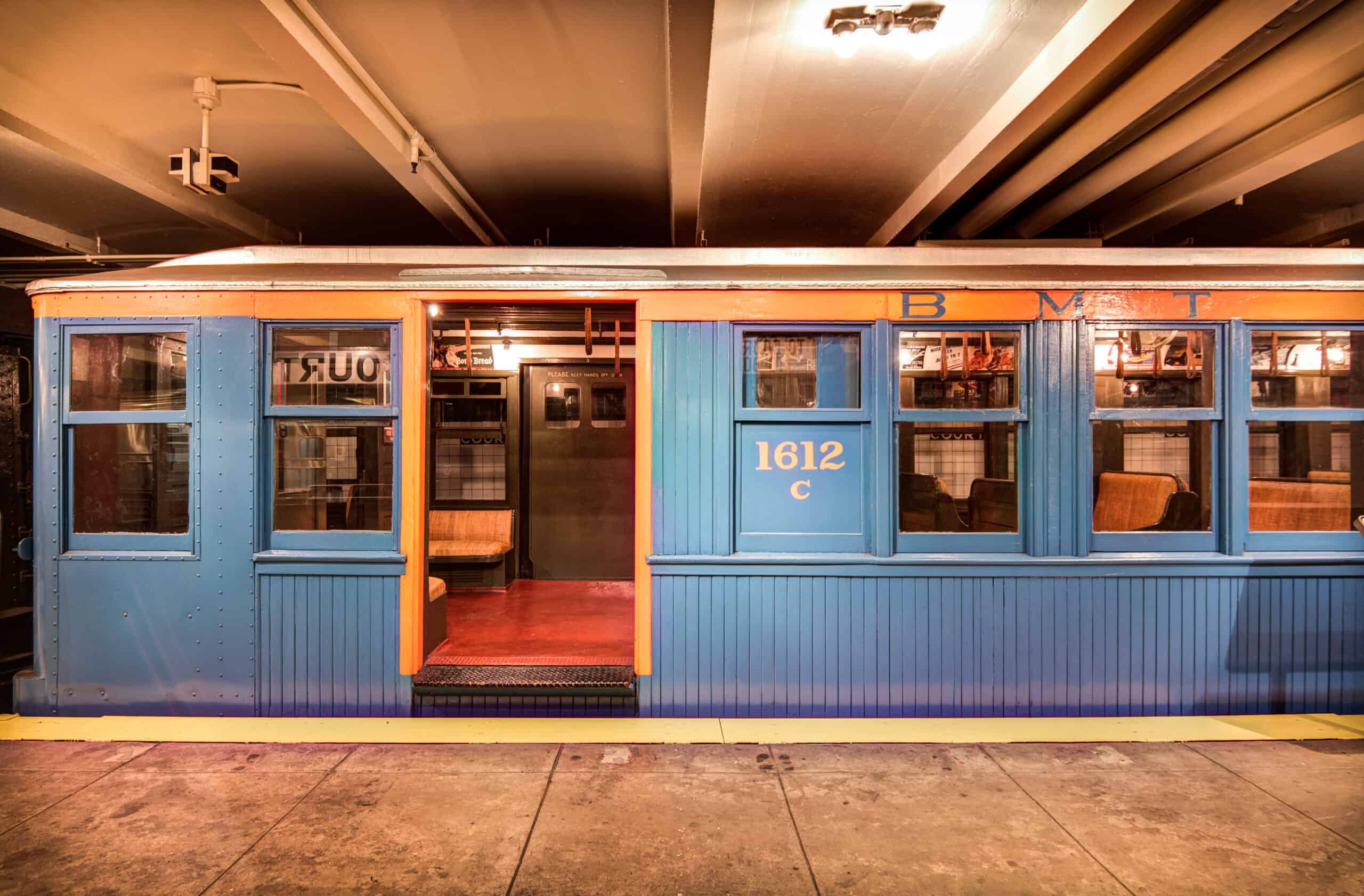
Content approved by Jerry Parker The New York Transit Museum displays historical artifacts connected with the New York City subway, bus, and commuter rail systems. The museum is located in the formerly active Court Street Subway Station in Brooklyn. This station was built to be a terminus for local trains operating on the IND Fulton […]
Content approved by Jerry Parker
 The New York Transit Museum displays historical artifacts connected with the New York City subway, bus, and commuter rail systems. The museum is located in the formerly active Court Street Subway Station in Brooklyn. This station was built to be a terminus for local trains operating on the IND Fulton Street Line. Another museum annex is located in Grand Central Terminal in Manhattan.
The New York Transit Museum displays historical artifacts connected with the New York City subway, bus, and commuter rail systems. The museum is located in the formerly active Court Street Subway Station in Brooklyn. This station was built to be a terminus for local trains operating on the IND Fulton Street Line. Another museum annex is located in Grand Central Terminal in Manhattan.
The station was a testament to the IND service theory that required local trains to operate within individual boroughs whenever possible, providing transfers to express trains that would extend out to other boroughs. As it turned out, the only trains operating out of this station were with the Court Street Shuttle, transporting passengers from Court Street to the Hoyt-Schermerhorn Street transfer station. This station never got very busy, and eventually it was abandoned in 1946. It continues to be a functioning subway station, though, with trains moving in and out of exhibits via a tunnel between station platforms and outer tracks.
The New York City Transit Exhibit opened on July 4, 1976, as a temporary museum. It was so popular that it eventually became a permanent museum. The museum is housed underground in downtown (Brooklyn). The working platform covers a full city block, and cars date back to 1907. The museum features memorabilia connected with (New York) City transit systems, including subway, bus, railway, bridge, and tunnels. Visitors can attend lectures and seminars, see films, and take tours of the museum. Visitors can climb aboard cars, steer vintage buses, imagine what it must have been like in an old fashioned train station, and explore the history of mass transit in New York City. A mezzanine showcases exhibits, and visitors can also enjoy sack lunches in the dining space or shop in the gift shop.
The world’s first underground railway system was designed by Marc Brunel and opened in 1863 in London. The underground system was called the Thames Tunnel. These electric trains operated in underground tube lines between Paddington and Farringdon Streets. This subway train and the ones that followed in the next decades were designed to transport commuters into and out of London.
The first New York City subway opened on October 27, 1904. This first line covered 9.1 miles and ran through 28 stations. It connected City Hall with Grand Central Terminal, then traveling to Times Square and finishing in Harlem. More than 100,000 people paid a nickel to take a ride that day under the streets of New York City. Today, about 4.5 million people ride the subways of New York City. The system has 26 lines and 468 stations, and it runs 24 hours each day.
The first bus was a horse-drawn carriage designed to hold up to 10 people at one time. These omnibuses were not especially pleasant for passengers due to the rough road conditions that existed at the time. Eventually horsecars and cable cars were designed to run on rails and tracks, but there were limitations with these systems. Buses were a more modern invention, designed in the late 1800s. This type of mass transportation was cost-effective and efficient for many municipalities.
In New York City, stagecoaches were pulled by horses in the 1820s and 1830s. Omnibuses were used during the 1850s, and electric trolley cars eventually replaced horses. The first motor buses were run by private companies in the early 1900s. Over the next decades, New York City acquired private bus companies, establishing numerous bus routes within the various boroughs.
Commuter rail systems operate within metropolitan areas to transport commuters between inner cities and outlying suburbs. These systems may be electrified or diesel powered. Originating from the first trains of the 19th century that were the main means of extensive travel, these lighter rail systems were the solution for commuters who wanted to get in and out of the big cities daily to go to and from work. Commuter rail systems may operate at higher frequencies during peak hours and at lower frequencies during off-peak hours.
Elevated trains debuted in New York City in 1868. The “el” didn’t start transporting paying passengers until 1870 with three passenger cars. In August of 1870, the railway was forced to close when it was deemed unprofitable. After reorganization, the company opened again in 1871 with more cars and coal-burning steam locomotives. Slowly, the trains gained popularity, because they were faster than streetcars. Eventually, the city’s subway system was created, and the elevated railway was discontinued. Commuter rail systems in and out of New York City continue to be an extensive and popular means of commuting for people who need to travel within the New York metropolitan region. Hubs and terminals are located throughout the inner city, the boroughs, and surrounding counties and states.


